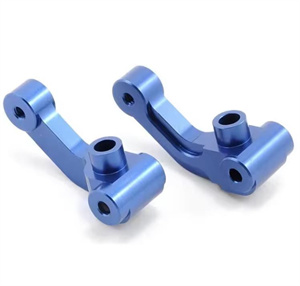Heat Treatment Of CNC Machined Parts
The tempering process of CNC Machined Parts is a heat treatment step used to improve or adjust the mechanical properties of materials, such as hardness, toughness, and strength. The following are the general steps and precautions for tempering CNC Machined Parts:
Tempering steps
Cleaning and inspection:
Before tempering, ensure that the CNC machined parts are clean and free of oil, chips, or other impurities.
Check the parts for any cracks, defects, or damage that may affect the tempering effect.
Preheating:
Some materials may require preheating before direct tempering to reduce thermal stress and prevent cracking.
The preheating temperature and time depend on the type and thickness of the material.
Tempering heating:
Place CNC machined parts into a tempering furnace and heat them to the predetermined tempering temperature.
The choice of tempering temperature depends on the type of material and the required performance. The common tempering temperature range ranges from 150 ° C to 650 ° C.
The heating process should be as uniform as possible to avoid local overheating or cooling.
Insulation:
When the CNC Machined Parts reach the predetermined tempering temperature, they need to be maintained at that temperature for a period of time to ensure a uniform temperature distribution inside the material.
The insulation time depends on the thickness of the material and the required performance.
Cooling:
After the insulation time is over, CNC Machined Parts need to gradually cool down.
The control of cooling rate has a significant impact on the performance of materials. Some materials may require air cooling, while others may require oil or water cooling.
Post processing:
After tempering, CNC machined parts may require some post-treatment, such as cleaning, deburring, or surface treatment.
matters needing attention
Temperature control: Ensure that the temperature of the tempering furnace is accurately controlled within the required tempering temperature range.
Time control: The insulation time should be accurately controlled to ensure a uniform temperature distribution inside the material.
Cooling rate: Different materials require different cooling rates. Cooling too fast or too slow can lead to a decrease in material properties.
Equipment maintenance: Ensure that the tempering furnace and other related equipment are in good working condition and undergo regular maintenance and inspection.
Safe operation: During the tempering process, relevant safety operating procedures should be followed to prevent accidents such as fires and burns.
By following the correct tempering steps and precautions, CNC Machined Parts can achieve the required mechanical properties to meet specific application requirements.
